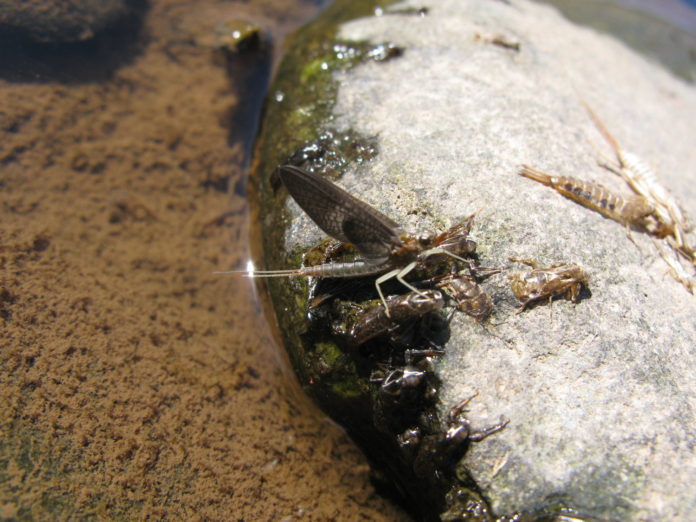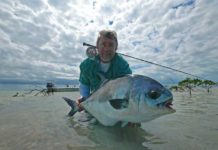By TONY BONAVIST
Isonychia bicolor is a large, dun-colored mayfly that does not receive a lot of attention from the Catskill fly-fishing community. Perhaps that is because the species is not as widely distributed as some of the more well-known mayflies like Hendricksons, Sulphurs, March Browns and Green Drakes. It doesn’t even have a well-known common name. Most folks familiar with the species simply call them “Isos.” In some locales, the names include Whirling Duns, Slate Drakes and White Gloved Howdies, because of the bi-colored legs.
From what I’ve observed, Isonychias are not found in rivers that maintain very cold water temperatures all season long, like the upper reaches of bottom-release tail-waters, where summer water temperatures seldom exceed 55 degrees. Where it is found, Isonychia emergences can be prolific, with large numbers of duns hatching sporadically throughout the afternoon and evening, depending on the time of year. There are two distinct hatches of Isonychia. The summer hatch takes place around the last week of June with an evening emergence. The second hatch, with the flies a bit smaller, occurs in September, sometimes extending to October. That hatch begins around two in the afternoon.
Of the various mayflies, Isonychia nymphs are the most unique and active. They have dark, elongated bodies, with a black stripe and prominent gills on the abdomen. There are three short tails. In appearance and behavior, the nymphs look more like very small fish than immature aquatic insects. Of all the mayflies, Isonychia nymphs are the fastest and best swimmers.
Isonychia nymphs become very active and migrate toward the shore. Trout follow the nymphs and actively feed on them. Unlike other mayflies that move from the river bottom toward the surface during the hatching process, Isonychia nymphs leave the water and climb on to stream-side river stones to hatch. This is the only mayfly that I’m aware of that behaves in this manner during hatching. The duns have slate gray wings with rusty-brown bodies. The species can easily be identified by the color of its legs; the front pair are dark, the rear two are cream-colored—hence its name, bicolor! Even though most Isonychia nymphs hatch out of the water, one night on the Esopus, I saw several slashing rises mid-stream and actually witnessed a number of Isos leaving the water directly. So, not all Isonychia nymphs hatch on stream-side river stones.
Isonychia nymph imitations fished just before and during a hatch can be very effective. Consider casting the fly upstream, allow it to sink and then let it swim toward shore on a tight line. A 4X leader is a must because strikes can be vicious and lighter tippets can easily snap. Catskill lore has it that the Lead Wing Coachman wet fly fished across and downstream can be deadly during Isonychia hatches. Since most Isonychia hatch out of the water, the duns don’t ride the surface before flying off. However, on windy days, a lot of duns are blown onto the river and trout eagerly take them. Skating a Dun Variant across the surface during a hatch can bring spectacular rises.
Unlike a lot of Catskill-style dry flies, not much attention has been paid to imitations of the Isonychia mayfly. Art Flick tied his pattern on a short-shank hook and called it the “Dun Variant.” His dressing called for dun hackle and tails with a body made from a stript brown hackle quill. There are no wings on variant style flies, but the hackle is large compared with hook size.
Of all Catskill rivers, the Esopus has by far the best hatches. For some reason, the river’s frequent turbid water favors this mayfly. Other common species, like Hendrickson, don’t do as well there, though. The Beaver Kill and lower East Branch have good fall hatches. Spinner falls appear late, mostly after dark.
So when the end of June and late September arrive, take the time to learn where this fly is hatching. Isos are at least a size 12, perhaps a size 10—a big fly. It is the last of the really large mayflies of the season; well worth looking for.
Credit: Source link






























